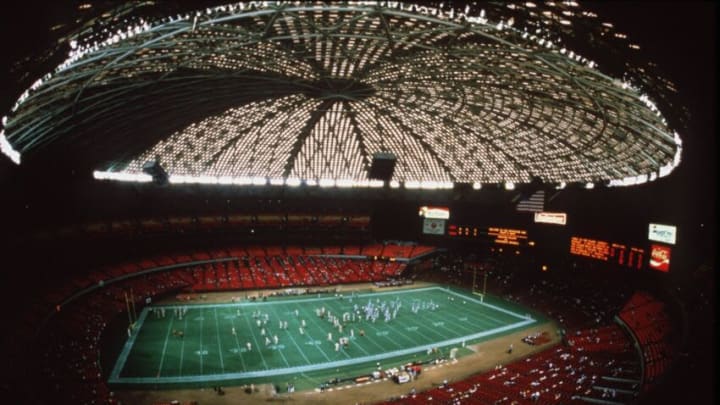
As American society entered the second half of the 20th century, advances in technology brought massive changes to the way we live our everyday lives. Many of these changes found their way into the game of baseball and affected the way that fans watched their favorite big league teams play the game.
The changes in baseball stadium designs starting in the 1960’s reflected the technological innovations that permeated our popular culture.
As the post-World War II Cold War led to the “Space Race” in the early 1960’s in our quest to reach for the stars, baseball reflected the new technological innovations that were becoming commonplace in our society. The old Houston Colt 45’s became the Houston Astros as a nod to the NASA Space Center in Houston.
With the new Astros teams name, a revolution in stadium design occurred with the creation of the Astrodome. Hailed as a wonder in architecture, baseball (and later football) was brought indoors with a roofed, air conditioned facility that was no longer dependent on the weather. Fans could sit and watch the Astros in relative comfort and ease and teams were no longer hampered by weather delays and rainouts.
While the creation of the Astrodome led to an explosion of other domed stadiums around the United States, most ballparks of the period 1960-1990 reflected the use of concrete and ‘astroturf” or an artificial playing surface. Open-air venues such as Busch Stadium in St. Louis, Veterans Stadium in Philadelphia, Three Rivers Stadium in Pittsburgh and Riverfront Stadium in Cincinnati represented the best and the worst sports architecture ideas of the time period and ushered in the concept of “dual purpose” stadiums. The term “cookie cutter” was used to describe the stadiums of the mid 20th century because, well, in reality, these stadiums did look like each other and they emphasized pure function over form and personality.
MLB teams shared their facilities with their NFL neighbors with the idea that once baseball season was over, the football teams could take over. The advent of artificial turf allowed organizations from both sports to quickly change out field dimensions for each sport. However, the smell of freshly cut grass was eliminated in favor of all-purpose turf that needed little maintenance; athletes, however quickly discovered that the astroturf had concrete underneath which made baseballs bounce more and took its toll on players’ knees.
The cookie cutter stadiums from 1960 to 1990 did have another thing in common with each other – each of these venues saw World Series championships for the respective teams as the Cardinals won in 1967 and 1982, the Phillies won their first World Series in 1980 and the Pirates won in 1979. Maybe there was a tiny bit of magic inside these concrete behemoths after all. At any rate, much like past World Series wins, these ballparks ended up on the scrap heap of sports history and were replaced by all-grass, baseball-only venues that harked back to the good old days of baseball.
